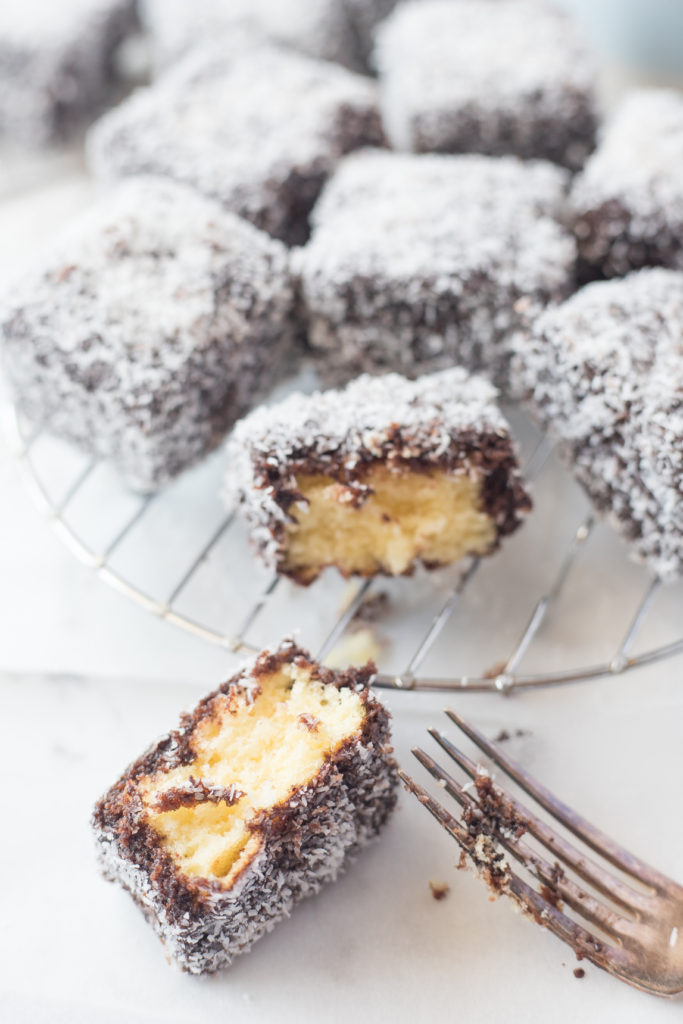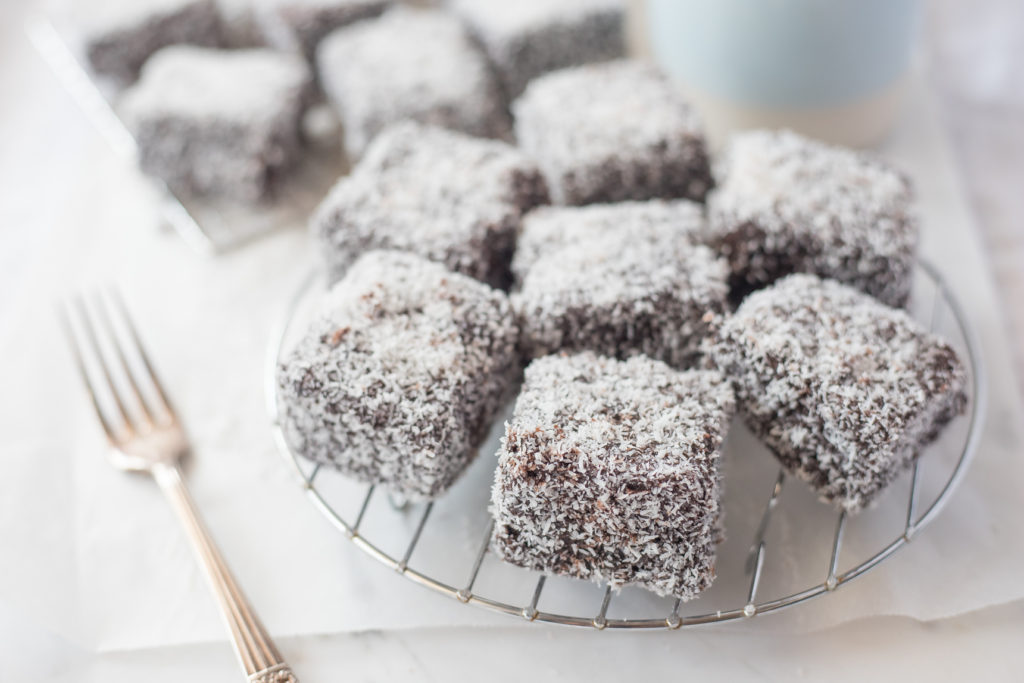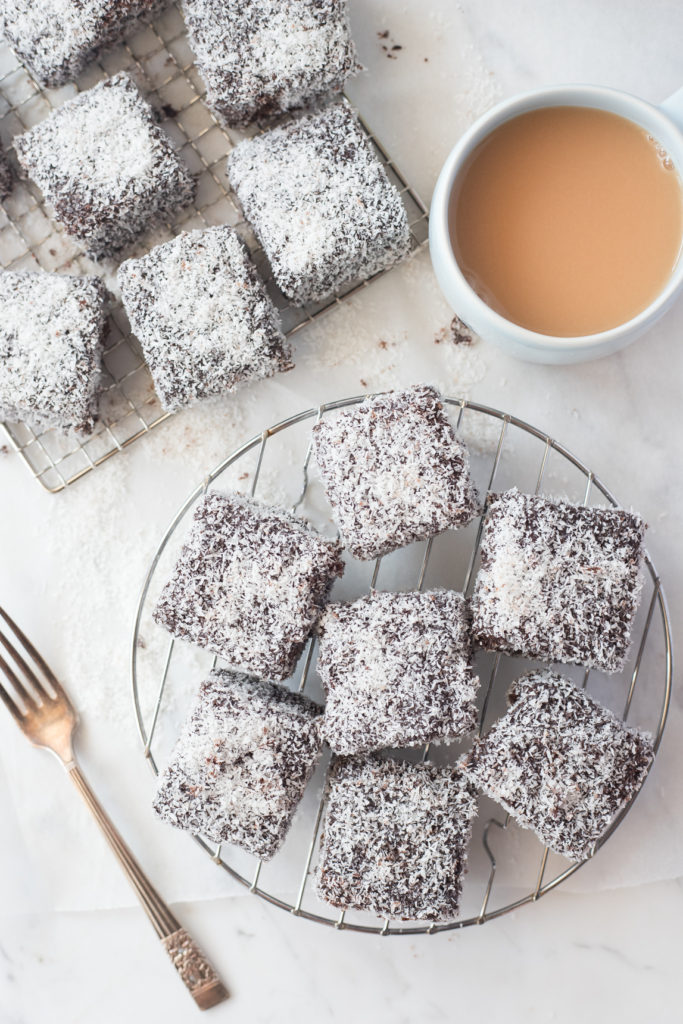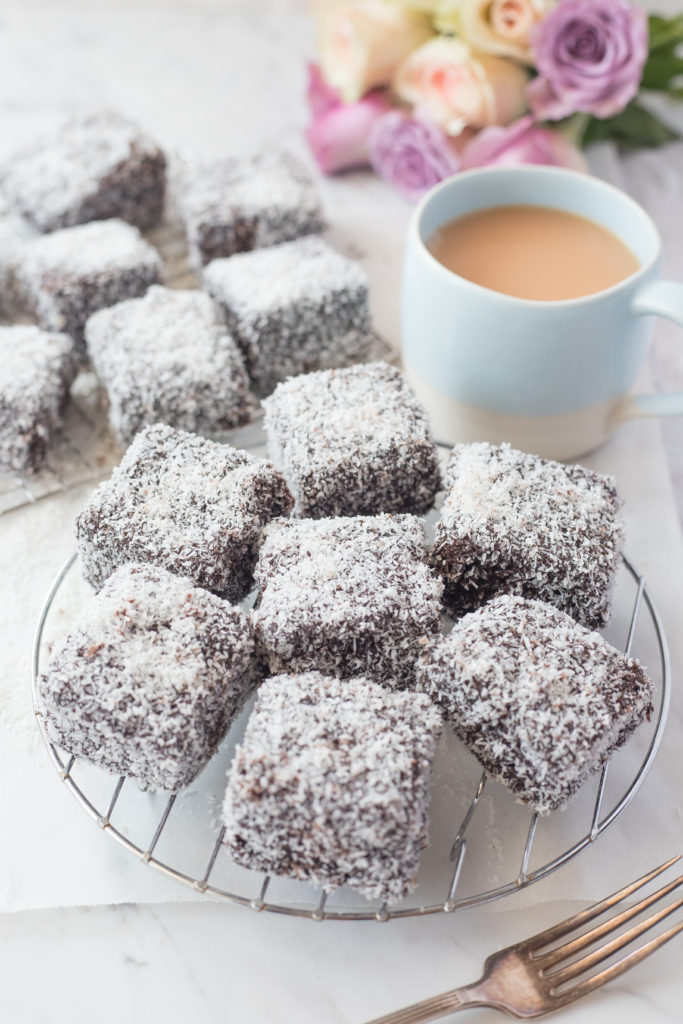My earliest memory of the lamington was at school, where there was a school fundraising drive for some charity (which I can’t remember) where we were given packets of lamingtons to sell to family and friends. I remember I loved sinking my teeth into the soft spongy cakes covered in cocoa and coconut and I was very happy if no one purchased them as I could have them all to myself (at my parent’s expense!).
There are various stories about how lamingtons were invented. However, one source found says it seems likely that they were devised by Armand Galland, the French chef to Lord Lamington, Governor of Queensland from 1896 to 1901. There is debate about whether lamingtons were first served at Government House, at the opening of the Ipswich Technical College or, as the locals claim, at the governor’s country residence at Toowoomba.

One account suggests that the lamington was first served in Toowoomba, when Lord Lamington took his entourage to Harlaxton House to escape the steamy heat of Brisbane whereas another claims that it was created by Galland at Queensland’s Government House in Brisbane during the busy period leading up to Federation in 1901. A further alternative claim is that Lord Lamington’s cook, presumably Galland, accidentally dropped a block of sponge cake into a dish of chocolate. It was later discovered that desiccated coconut, sprinkled over the top, made the cakes more appealing.

I found a lamington recipe in Queensland Country Life Magazine dated 17 Dec 1900 from the National Library of Australia. The lamington recipe is as follows:
Lamington Cakes. ½ cup of butter, 1 cup sugar, 1 cup flour, 3 eggs, 1 teaspoon baking powder, 4 tablespoons milk. Beat butter and sugar; add eggs well beaten with the milk, sift in flour and baking powder; flavour with vanilla or lemon to taste. Bake in sandwich tins. Cut in squares next day.
Icing.—3oz. icing sugar, 1oz. butter. Beat these to a cream and spread between layers, as jam would be used. For the outside icing:—3oz. sugar, 1oz. butter, 3 teaspoons or more of cocoa; vanilla to flavour. The square of cake, when doubled, are in the shape of a cube. Ice all over the cube with the cocoa icing, spreading it with a knife, then dip and roll in desiccated coconut.
However, the recipes I’m using in the ‘Make Me a Baker’ course have worked pretty well so far so I used Bake Club’s lamington fingers recipe. It’s pretty easy to follow and an absolute delight for afternoon tea. I’m on a roll with baking ever since I’ve started this course!









